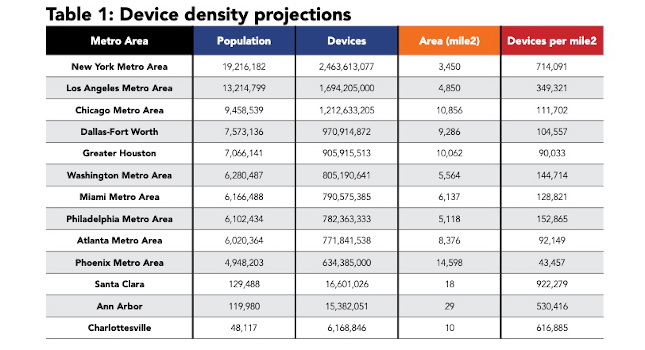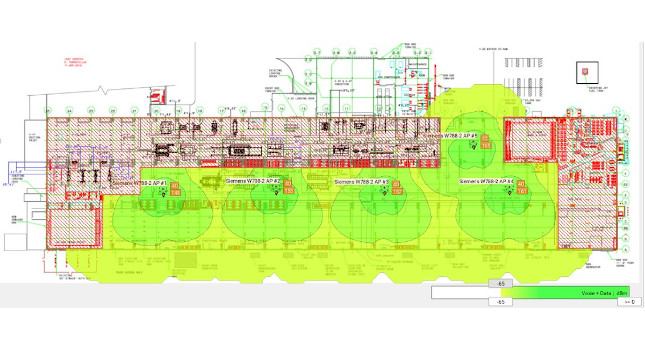When Ethernet first came into existence in the 1970s, this local area network technology was seen as a way to make office-level communications faster and convey large amounts of data at greater speeds. Ethernet’s high data capacity was seen as an ideal solution for office-level networks because in these scenarios, multiple clients must use the same network to share information.
When Ethernet first came into existence in the 1970s, this local area network technology was seen as a way to make office-level communications faster and convey large amounts of data at greater speeds. Ethernet’s high data capacity was seen as an ideal solution for office-level networks because in these scenarios, multiple clients must use the same network to share information.
While PCs are ideally set up for Ethernet, lower-level industrial networks such as DeviceNet or PROFIBUS have traditionally been best suited for managing I/O data and applying it to control factory machinery. To assist these devices in making the switch, Transmission Control Protocol/Internet Protocol (TCP/IP) provides a set of services so that the devices may communicate over an Ethernet network. TCP/IP is increasing in popularity, as virtually all major computer operating systems now employ Internet and intranets for internal information distribution. When combined with suitable plant floor machinery, this distribution extends factory-wide and allows everyone from upper-level management to global partners to external regulatory organizations to view data and machine status. It can be used to perform program maintenance, supervisory control, log events and alarms and provide connectivity for operator interfaces.
Protocol of choice
Ethernet is rapidly becoming the network of choice for higher level industrial control applications such as connecting PLCs, computers and HMI displays. Various different versions of Ethernet technology are available for industrial use, including EtherNet/IP and Modbus TCP. Data exchange using Ethernet is based upon a “producer-consumer” model: a transmitting device produces data, which is simultaneously received, or consumed, by many devices. I/O data and machine status — information vital for ensuring continuous, efficient operations on the plant floor — are transmitted from a remote device to one or more PLCs, which then process the data and transmit it to a PC or other designated upper-level device.
The primary advantage of using an industrial Ethernet network is its ability to quickly communicate process data to a PC or PLC anywhere in the world. With Ethernet networks, devices use the IP addressing scheme so that they may be “seen” by users on the network, typically requiring the company’s IT department to be involved in the system’s setup. The key advantage of this arrangement is that one network can be used for all information within the company.
Same network, different messages
While different protocols based on Ethernet technology (such as EtherNet/IP and Modbus TCP) use the same physical layer and can operate on the same cable, they cannot necessarily communicate with one another. The messages and communication protocol are defined differently for each of these systems, so Modbus TCP devices cannot communicate with EtherNet/IP devices. This problem can be likened to two people who try to converse but speak different languages — both use vocal chords, but their language rules are different. Another drawback is Ethernet’s inability to communicate power and signal on one cable.
Ethernet’s physical layer facilitates transmission of large amounts of data and allows many devices to communicate with one another over great distances. Its larger bandwidth of 100 MBaud can handle copious amounts of data and greater access to individual devices. However, all this traffic requires prioritization, which is established through Ethernet switches.
Contrary to lower level networks, every device on the Ethernet network must be connected through a switch to bring the devices onto the network; this is known as star topology. These switches include a software element to prioritize the data, limiting the bandwidth to where it is needed most so that only the data desired is brought to the higher level. While the perception may be that Ethernet is less expensive to implement than lower level networks, the cost for the additional switches counter the benefits that Ethernet provides. This fact, added to the additional time it takes to address network devices and individually wire every device through a switch, makes Ethernet more suitable for complex networks and machines that provide data vital to the overall enterprise.
Though it is appealing to have Ethernet as the only network within an enterprise, lower level networks are still prominent in industrial applications. This is primarily due to the fact that there is a larger variety of product available for lower level networks and the technology is familiar to plant personnel.
Lower level networks also allow a line topology — where devices may be connected to one another (daisy-chain) — eliminating the need for the switches and additional wiring Ethernet networks require. What a user sacrifices in higher level accessibility can be made up for in the reduction of the time it takes to address each device and the cost of implementation. Essentially, users must determine what is more important: having the process data accessible quickly at all times anywhere in the world, or having a broader selection of product and a lower initial investment.
Best of both networks
Now, users can experience the best of both networks by employing gateways that can bring lower level process data onto an Ethernet network. This solution is especially useful for companies currently using a lower level network but would like to migrate to Ethernet, without the cost of a complete plant retrofit. The gateway communicates with the lower level network via its normal transmission system, but includes an Ethernet connection that then communicates the process data to a switch, which essentially makes the entire network appear as if it is on Ethernet. Therefore, users can obtain device level data through a PC via the Internet without requiring an IP address for each device.
Another advancement integrates the technology used in Ethernet switches into I/O modules. Incorporating this switch/module into a system negates the requirement of all devices being connected back to a separate Ethernet switch and allows line topology. This and other technologies are constantly being developed to help users overcome some of the limitations of Ethernet, allowing more and more companies to take advantage of the many benefits Ethernet can provide in today’s automation environment.
Ethernet is becoming the preferred network for higher level industrial control applications. With an industrial Ethernet network, process data can be quickly communicated to a PC or PLC anywhere in the world.
| Author Information |
| Christian Vitale is a senior product manager at TURCK Inc. |



